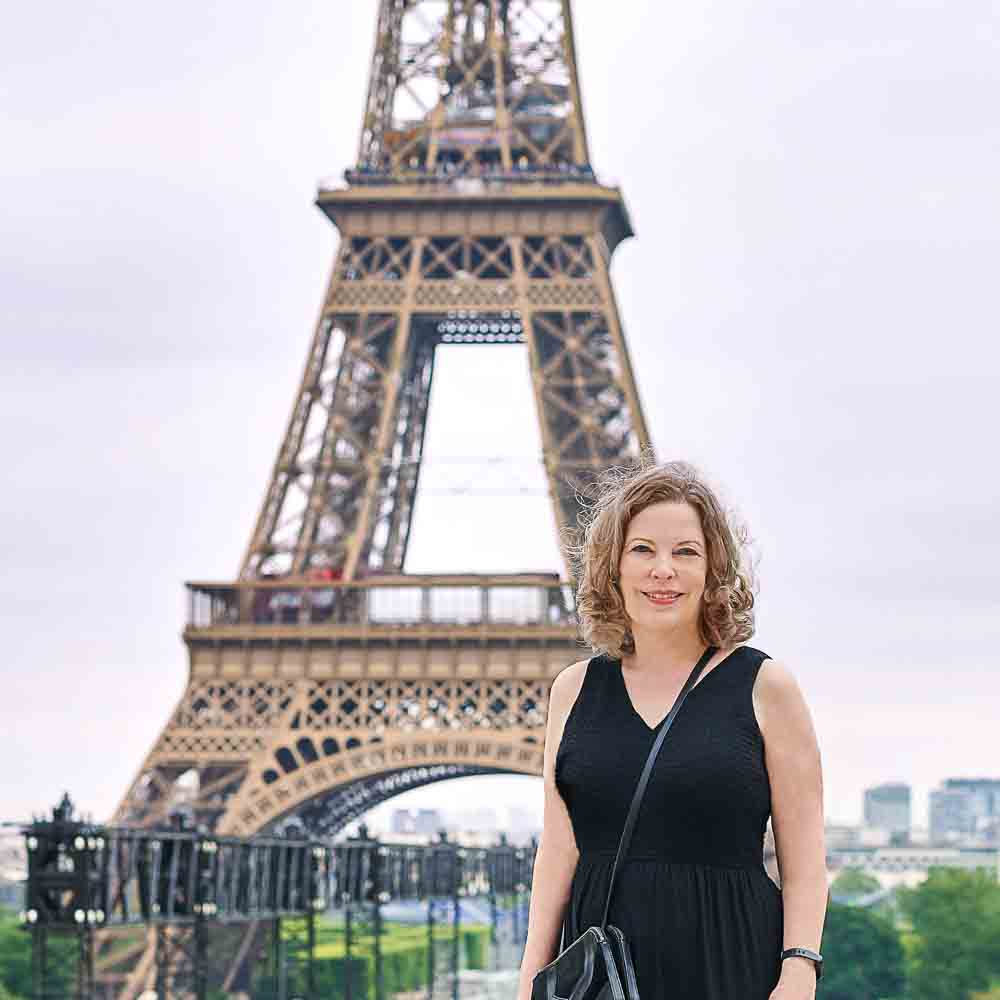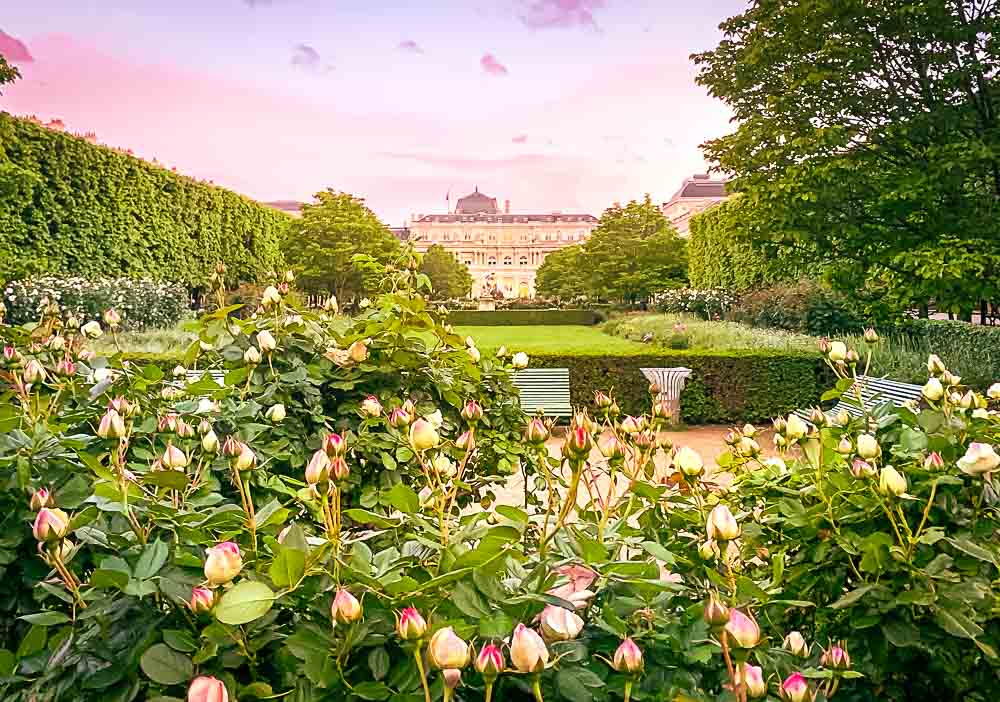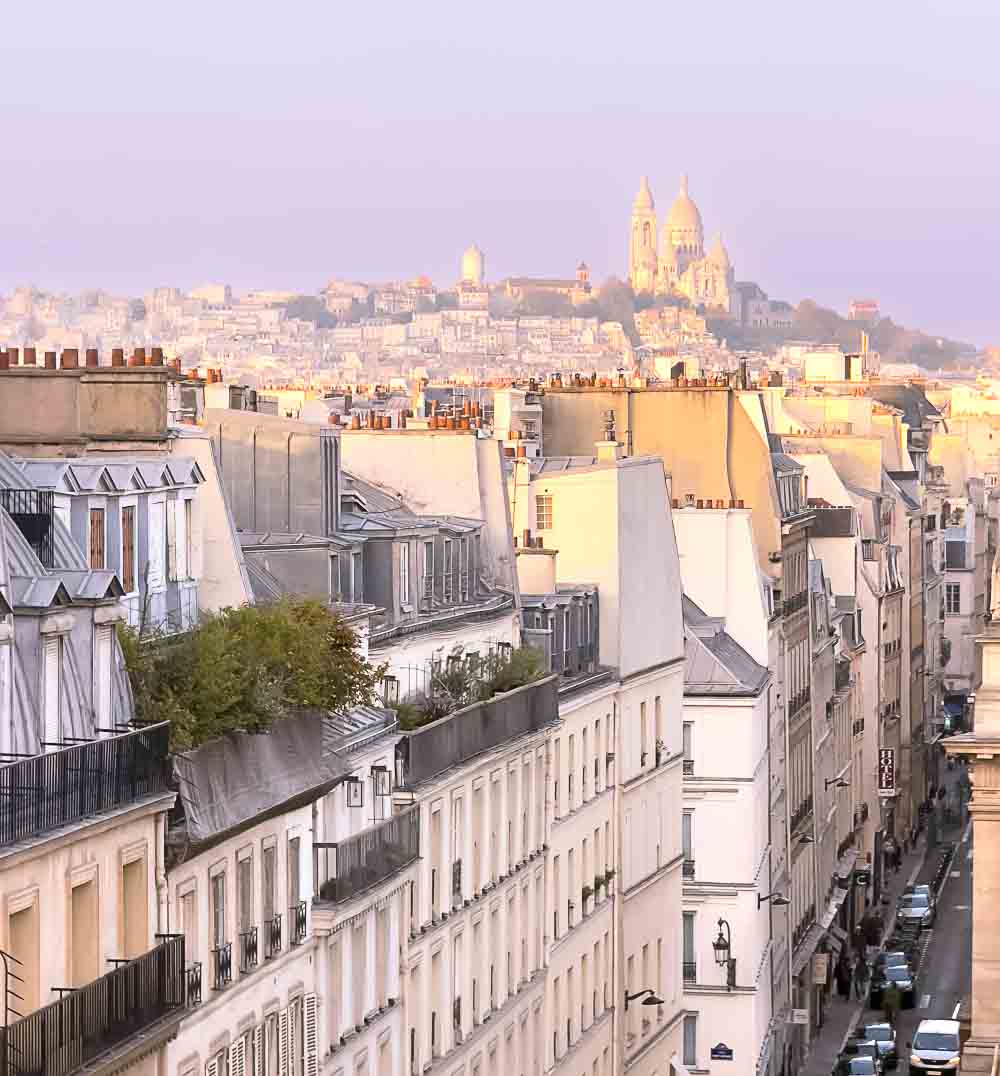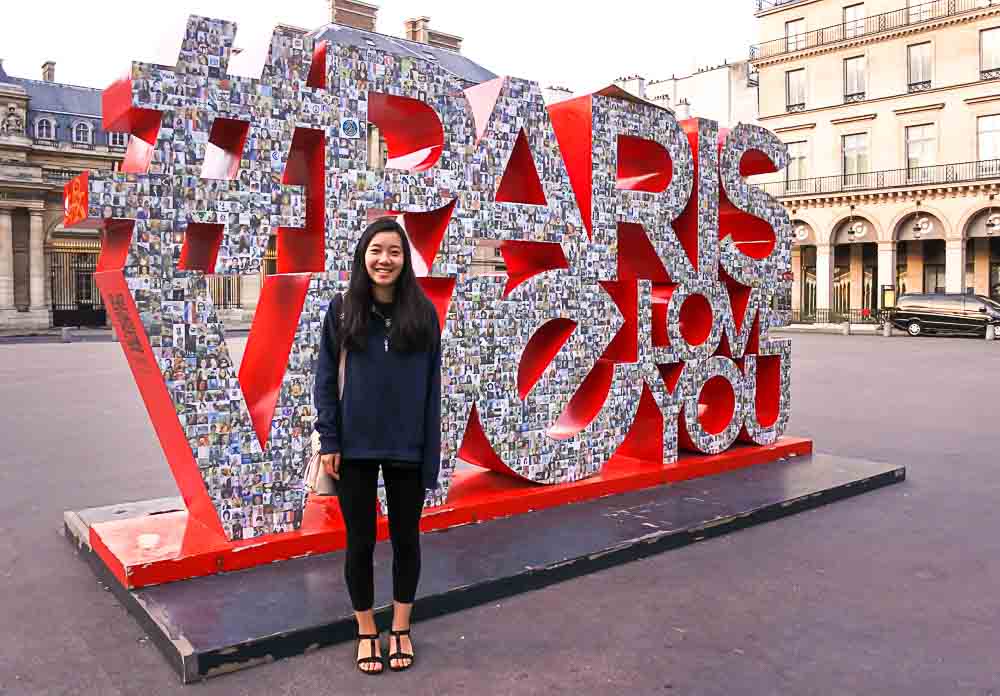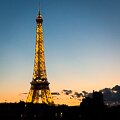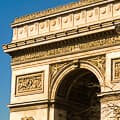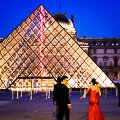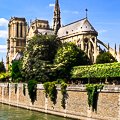Planning a trip to Paris? Travel guide books give you a quick, easy way to find all the information you need about the top attractions, fun and historic neighborhoods to explore, best hotels to stay in, places to eat, and even interesting things to do with kids if you're traveling as a family.
Some also include excellent Paris city maps, others provide insights into Paris culture and history, and still others may inspire you with their gorgeous color photos of everything Parisian from the Eiffel Tower to steak-frites.
But with so many appealing choices available, what is the best guide book for planning your trip to Paris?
Well, that depends because everybody is different.
Maybe you love details - or maybe you just want highlights. Maybe you want to find out about "hidden secret" spots as well as famous bucket list attractions - or maybe a quick list of the 10 best things to see and do, top hotels and restaurants in a few price ranges, and few travel tips is more your style.
The good news: there's something for everybody. This article provides our top picks in a variety of categories:
- Best Paris Travel Guides for Planning your Trip
- Paris Guides to Walking Tours & Getting Around
- Guides to Hidden Paris
- Guides to Paris Culture & Special Places
- Books about Paris Markets & Food
- Guides to Paris History & Architecture
- Paris Travel & Guide Books to Buy in Paris
Top photo: Paris guide books in a local bookstore
Please note: Some links on this page go to Amazon.com. As an Amazon Associate, ParisDiscoveryGuide.com earns from qualifying purchases.
Paris Discovery Guide is a reader-supported publication. When you buy through our links, we may earn a commission at no additional cost for you. Thank you for your support!!!
Best Comprehensive Guide Books for Planning Your Paris Trip
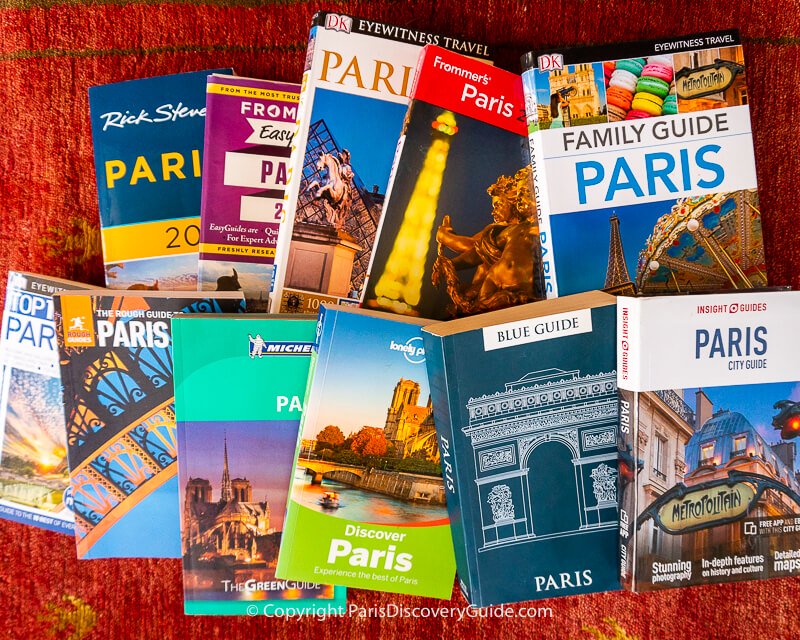
Looking for the best Paris guide book for planning all aspects of your trip?
Here's where to start:
Rick Steves Paris
By Rick Steves, Steve Smith, & Gene Openshaw
Rick Steves' love of travel and enthusiasm for making it accessible to everyone comes through loud and clear in the 700+ pages of this comprehensive guide. The thin but surprisingly sturdy pages make it light enough to pack and bring with you without worrying about the weight.
If you're a first-time visitor, you'll appreciate his focus on top attractions such as the Louvre Museum, Eiffel Tower, and Pere Lachaise Cemetery plus his recommendations about what to see at each site.
If you're a return traveler, check out his recommendations for the best hidden gems.
In addition, Rick Steves' Paris provides a thorough "orientation" to Paris, including tips on getting around, shopping, and dining. If you're planning a family trip, you'll find lots of good tips in his suggestions about things to do with kids in Paris. A foldout map is a nice plus.
Recommended for: First time and return travelers to Paris, especially if you want get the most out of your time and money without breaking the bank.
Want an even more compact version? Check out Rick Steves Pocket Paris - it's packed with trip-planning tips, itineraries, suggested walks and tours, a pull-out map, and lots more.
The Rough Guide to Paris
UK publisher Rough Guides honed its reputation by providing straightforward information to budget-minded travelers on the younger end of the demographic scale, and The Rough Guide to Paris reflects that.
You'll find decent recommendations for bars, clubs, and other entertainment venues (just beware that Paris nightlife constantly evolves, so no doubt some of the information will be out of date).
Sections on Paris neighborhood attractions include areas that most other guides don't mention: La Villette (home to the newish Philharmonie de Paris concert hall, a huge science and technology museum focused on kids and teens, and a top exhibition hall), Passy (cool market street plus other attractions in the 16th), Belleville (awesome street art, which the guide book doesn't mention, and the spectacular Parc des Buttes-Chaumont), and Ménilmontant (Pere Lachaise Cemetery and the Edith Piaf Museum). You'll also find a section of some of the interesting but often overlooked suburbs.
Otherwise, The Rough Guide to Paris covers all of the top attractions (sometimes with a "chilled out" twist on how to visit), favorite neighborhoods, and general travel advice that you'd expect and want in a comprehensive guide. There are quite a few useful maps, plus nice photos.
And finally, if you're interested in lesser-known Paris locations (a.k.a. "hidden gems"), it's clear that the author has ventured fairly off the usual beaten tourist paths and discovered some cool spots that other publications generally miss. (We felt rather sad to see a few of our favorite unknown-to-most-visitors spots revealed.)
Recommended for: Budget-minded Paris visitors who want to do and see the city's top attractions but also explore the nightlife and wander a bit from the touristic center. And if you're already a Rough Guide fan, you're sure to love this one.
DK Eyewitness Paris Travel Guide
If you're the type of traveler who draws inspiration from gorgeous photos paired with just enough text to let you know what you're looking at, DK Eyewitness Paris may be your top choice guide book planning your trips.
Details take a back seat to inspiration in the first sections of this book but don't be deceived: DK Eyewitness Paris packs a hefty amount of interesting facts, useful tips, and logistical details into the guide's later chapters. Beautifully detailed drawings, diagrams, and even timelines make the information interesting and accessible.
Recommended for: Anyone who wonders why Paris is worth visiting, wants ideas about what to see and do, or simply enjoys gazing at photos that capture the beauty and magic of this special city will find a lot to love in this book. The fact that you'll also learn a lot about the City of Light is a bonus.
DK Eyewitness Top 10 Paris
If you love lists, you may find DK Eyewitness Top 10 Paris hard to put down once you start looking through it. With "top 10" lists for everything from top attractions to museums to places to eat near the Eiffel Tower, this small almost pocket-sized guide book contains a huge amount of useful information as well as a laminated pull-out map.
"Top 10 things to see" lists for each of the top 10 Paris attractions such as the Louvre Museum and Army Museum give you useful information to make sure you don't miss anything.
Annual updates keep the recommendations on point, and plenty of small photos, drawings, and maps mean you still get the rich visual images that make DK Eyewitness guides stand out from the competition. A small section with practical information about getting around the city, etc, and recommendations for around 80 hotels based on price range and style round out the guide.
Recommended for: Anyone who loves lists and/or wants a small-format (4" x 7.5"; 10cm x 19cm) guide book filled with useful information.
Insight Guides Explore Paris
If you're looking for the perfect combination of detailed Paris travel information, a large number of excellent photos, and a few maps and diagrams, Insight Guide's Paris City guidebooks may be the perfect fit for your needs.
As you might expect in a comprehensive guide book, topics such as "Chic Shopping" and "Paris After Dark" give you a good overview of things to do in the city. But you'll find some of Paris City Guide's best information in the coverage of specific things to do and see in 10 neighborhoods including not only those with the best known tourist attractions (Ile de la Cité, the Latin Quarter, etc) but also interesting but less well known areas such as Bastille, East Paris, and Montparnasse. Don't miss the useful section on Paris Disney and other day trip destinations.
There's also a smaller Pocket Edition of this guidebook. It's not as comprehensive but if you're packing as little as possible, it's definitely worth considering.
Recommended for: First time and return Paris visitors who want a comprehensive guide packed with useful details.
Please note: As of early 2025, neither of these Insight guides has been updated since 2019, so some information may be out of date. The books still contain lots of useful information and offer lots of value. If you're considering buying one or both of them, consider buying a cheap used copy.
Lonely Planet Paris
Although Lonely Planet's guide books originally earned their reputation by highlighting off-the-beaten-trail attractions, the current Lonely Planet guide to Paris focuses primarily on popular attractions and experiences - but it does that very well by packing in a lot of information within a lively framework.
Starting with brief descriptions of top Paris highlights, itineraries, and top events each month, Lonely Planet Paris then provides detailed information for important attractions in eight central Paris neighborhoods before ending with brief sections on topics such as family travel, architecture, and food and wine.
What makes this guide book a standout, though, is the balance between the 50 or so maps (marked with walking routes), color photographs, diagrams, and "Don't Miss" pages that help you focus on the most important attractions.
Another big plus: The pull-out "Just Landed" card with wifi, ATM, and Paris transportation information provides everything you need to go to get from the airport to your hotel or apartment.
Recommended for: First time and return visitors who like to get comprehensive travel information in a well-organized, lively, easy-to-digest format.
Blue Guide: Paris
By Delia Gray-Durant
When you want the most in-depth information possible in a comprehensive Paris guide book, Blue Guide: Paris is where to turn. For example, it devotes almost 60 pages to detailed descriptions of the most important pieces in the Louvre's collections, along with site plans. As a bonus, the lively writing style brings the art to life with its vivid descriptions.
Also impressive is how Blue Guide: Paris provides detailed descriptions to small attractions as well. The little-known but fascinating National Marine Museum (Musée National de la Marine), which many guide books don't even mention, gets almost 3 pages including a photo and by the time you finish reading them, you'll know exactly what to look for and expect in the museum's model ship collection.
For each neighborhood, Blue Guide: Paris also suggests walking tours (with maps) and places to eat nearby. A small section at the end contains a nicely curated list of hotels in three price categories.
Recommended for: Anyone who wants detailed information about things to see in Paris museums, historic churches, concert halls, and other cultural and important institutions.
Please note: This book hasn't been updated since 2015. If you want detailed and comprehensive information about places that don't change much (such as the Louvre), this book is still totally worth getting. But it's astonishing that the publisher (Blue Guides) hasn't produced a more recent editition about Paris, one of the world's most-visited cities.
But a couple of caveats: Information about any site that's undergone a recent renovation, such as the National Marine Museum mentioned above, may be out of date, and you should also (mostly) disregard the restaurant and hotel information. For the best value, look for a cheap used copy.
Michelin's Paris: The Green Guide
Michelin guide books are known for their comprehensive coverage and numerous details, and their Paris: The Green Guide is no exception. Color photos, site plans, maps (with walking routes), and diagrams help bring the text to life.
Starting with the first four Paris arrondissements, the guide includes descriptions of the top attractions in the arrondissements' major neighborhoods. In the often overlooked 13th, 14th, and 15th arrondissements, for example, the section on the Javel-André-Citroen neighborhood includes brief descriptions of several themed gardens in Parc André-Citroen, the Beaugrenelle complex (although strangely, there is no mention of the shopping center), the huge Aquaboulevard water park. Just like Michelin does with restaurants, this guide assigns 0-3 stars to each attraction. You may or may not always agree with them.
Paris: The Green Guide also includes small sections on getting around, Paris history, contemporary Paris culture, shopping, where to stay, and where to eat - although for restaurants, you may prefer to get the latest edition (2021, in French) of their Paris restaurant guide if you can read French well enough to glean at least the basics.
Recommended for: Anyone who wants detailed information about things to see in Paris museums, historic churches, concert halls, and other cultural and important institutions.
Please note: This guide has not been updated since 2018. However, as long as you disregard pricing and similar details, it delivers lots of useful still-timely information.
Michelin Green Guide Short Stays: Paris Travel Guide
This Michelin Guide "Short Stays" guidebook to Paris is packed with useful, mostly evergreen (luckily, since the last update was in 2020) information about Paris neighborhoods, things to do, and itineraries. Like the regular Green Guides, this guidebook uses Michelin's star-rating system for most of the categories it reviews.
Travel tips, though brief, are to the point. And restaurant and hotel recommendations are solid, because the guide sticks with the "classics" that don't change much over time. You won't find the newest and trendiest places to eat or stay, but you'll find enough in this book to do 90% of your trip planning.
Small maps of specific location and appealing photographs add to the book's appeal.
How does Michelin's "Short Stay: Paris" book compare with the regular Green Guide for Paris?
If you're planning a first or return trip, you'll probably find this "Short Stays" version much easier (and more interesting, thanks to the photos, format, and writing style) to use.
If you want to do a deep-dive into the history and details about a particular site, then go for the regular Michelin Green Guide (or Blue Guide's Paris book, which includes even more details).
What you should ignore this book are the pricing and cost details - although surprisingly, they haven't changed by a huge margin.
Paris Guides to Walking Tours & Getting Around the City
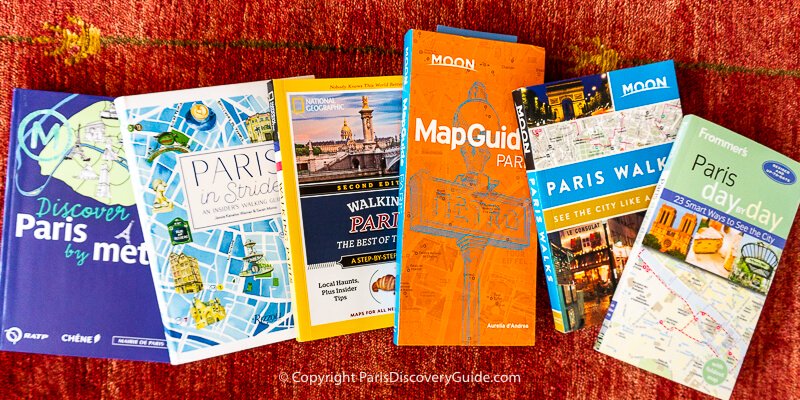
Paris in Stride: An Insider's Walking Guide
By Jessie Kenelos Weiner & Sorah Moroz
Delightful watercolors and maps with walking routes illustrate each of Paris in Stride's 10 chapters devoted to showing you the best places to visit in a specific Paris neighborhood. Of course you'll find areas popular with tourists such as the Marais, Montmartre, and Saint-Germain-des-Prés, but equally fascinating and perhaps even more interesting to explore are lesser-known areas such as Rue de Charonne/Place d'Aligre and the corner of the 16th arrondissement dubbed "Museum Hub" by the authors.
In addition to all the places you'd expect to find profiled, you'll also discover (perhaps) new-to-you concept stores, chocolatiers, galleries, and places to eat and drink in Paris in Stride. Each chapter also contains bonus how-to sections with useful information for you use during your walk: how to navigate an open-air street market, how to "apero" (ie, the Parisian tradition of enjoy a glass or two of wine or an apéritif accompanied by snacks or small plates during the early evening hours, and incidentally, a short list of the best natural wine specialists in the city), and how to choose cheese in a fromagerie.
Recommended for: Everyone who's planning to walk around Paris and explore, eat, and drink along the way. (Warning: This book may make you hungry - so if you're reading this book at home while plotting your trip to Paris, be kind to yourself and have a glass of wine, some chocolates, and ideally a few macaroons close at hand.)
Great Trees of Paris Map: Guide to the Oldest, Rarest, and Historical Trees in Paris
By Amy Kupec Larue
This is actually just a 2-sided laminated fold-out map, not a book - but it's my current obsession at the moment. It's packed with information, tree photos, and of course a map showing locations of 50 of Paris's most remarkable trees, such as the 400+ year old Black Locust brought over from North America in 1601 that you can see in Square Viviani across from Notre Dame.
Anytime you're planning to stroll around Paris with a few minutes to spare, check the map to find out what unusual tree might happen to be nearby for a quick detour. Sometimes the best experiences while walking around Paris are the unexpected ones.
Moon MapGuide Paris
By Aurelia d'Andrea
Ten fold-out maps at the beginning of MapGuide Paris cover popular neighborhoods from the Latin Quarter to Grand Boulevards to Canal Saint-Martin, each with location markers for top choices in a half-dozen categories: sights, restaurants, nightlife, shops, arts and leisure, and hotels.
Following the maps, sections devoted to each of these categories provide descriptions, addresses, and other pertinent information for attractions marked in each map, from Map 1 to Map 10. Although MapGuide Paris doesn't recommend specific walking routes, you can easily do this yourself after you pick out exactly what you want to see in each neighborhood. Although almost every page of this handy guide features small photos, the maps are the real stars.
Recommended for: Paris visitors who love a methodical approach to planning and like the idea of plotting your own walking route based on your own specific interests.
Moon Paris Walks: See the City Like a Local
If you like the detailed maps of Moon MapGuide Paris but would prefer pre-defined walks along with commentary about what you'll see and experience plus detailed fold-out maps, Moon Paris Walks: See the City Like a Local may be the guide book for you.
Although Paris Walks includes only six routes, each one covers two or more distinct neighborhoods, such as Walk 1: Batignolles & Montmartre, or Walk 6: Belleville, Canal Saint-Martin & Ménilmontant. And as you can see from these examples, several of the walking routes introduce you to interesting lesser-known neighborhoods where you can see more of the "real" Paris. But don't worry, others such as Walk 5: Eiffel Tower, Invalides & Champs-Elysees cover all the famous attractions.
You could certainly cover any of these six walking routes in a day or perhaps less if you don't linger over lunch - but Paris Walks designs them so that you can pick the segments of most interest to you and do a leisurely exploration.
Recommended for: Paris first time and return visitors who want to follow defined walking routes.
National Geographic's Walking Paris: The Best of the City
By Pas Paschali and Brian Robinson
National Geographic's Walking Paris: The Best of the City combines "whirlwind tour" walking guides designed for a day, a weekend, fun, and a weekend with kids with more detailed walking guides for nine different Paris neighborhoods.
Each section has its own map marked with a walking route plus information about the attractions you'll see, interspersed with gorgeous color photos. One of Walking Paris's strengths is its contextual information in each section about history, culture, architecture, cuisine, street markets, and more.
The final part of the book provides basic travel information and recommendations for about 60 hotels.
Recommended for: Paris visitors and return visitors who want walking routes through the city's best-known neighborhoods.
Guides to Secret Gardens & Special Places
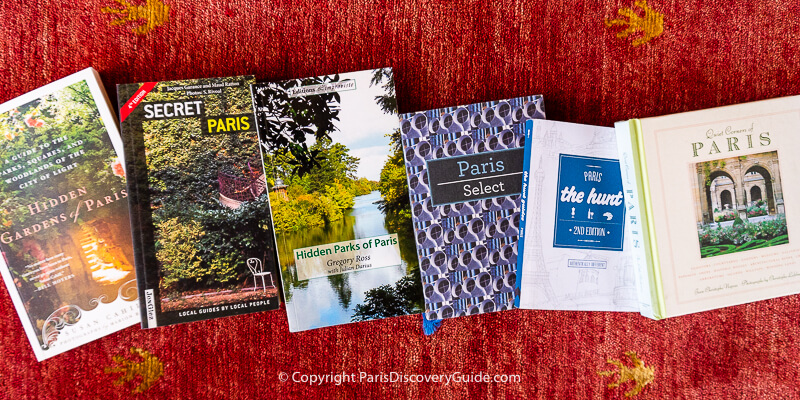
Secret Paris
By Thomas Jonglez
Want to know about truly obscure secret places and sights in Paris?
Esoteric and unusual suggestions pack this compact Secret Paris guide book, such as where to see a chunk of French King Philippe-Auguste's 12th century city wall in an underground parking garage, where to visit a hidden Zen garden, where to find a little-known church in the 7th arrondissement with a 14th century Italian Renaissance masterpiece by Tintoretto of the Last Supper.
And you definitely should not miss the wine-making firefighters or the war-wounded palm trees. (Yes, Paris really does have palm trees - more than you might expect!)
Secret Paris also includes numerous high-quality color photographs, maps, and suggestions about other secret places to visit near the major sites covered, plus a wealth of other details, tips, and information. In the "hidden Paris" genre, this book stands out!
Recommended for: You, if you like to explore and discover interesting things beyond the usual tourist attractions when you travel.
Hidden Gardens of Paris
By Susan Cahill
The 40 or so gardens covered in Hidden Gardens of Paris include well-known parks such as Luxembourg Garden and Champ de Mars as well as less obvious spots such as the garden at Musée Zadkine and Musée de la Vie Romantic, where Chopin and writer George Sand used to hang out in the 19th century.
Hidden Gardens of Paris includes color photos along with the descriptions of what you might see and experience in these gardens, but as a bonus also includes "nearby" suggestions for each destination. This is where you'll find truly hidden city Edens, such as the gorgeous rose-filled (and fairly hard to find) Jardin Saint-Gilles Grand Veneur and the lovely formal flower beds and orange trees in the garden behind Hotel Sully near Place des Vosges.
Recommended for: Everyone who loves parks, gardens, and the thrill of discovering places off the well-worn tourist track in Paris.
Hidden Parks of Paris
By Gregory Ross with Julian Darius
Part memoir, part travel guide, and part ode to a lost love named Caroline, Hidden Parks of Paris contains short but evocative descriptions of over 100 of Paris's almost 500 parks, public gardens, and green spaces accompanied by black and white photos.
You'll find useful suggestions related to well-known places such as Jardin des Plantes and the magnificent Musée Rodin garden, but this book's strength comes from descriptions of what do see and do at obscure and hidden spaces such as Square de Santiago du Chili, Square Roger-Stephane, and Square Boucicaut, all in the 7th arrondissement.
Recommended for: Anyone who likes travel memoirs and enjoys discovering less known and hidden places in the middle of Paris.
Where to Buy? Unfortunately, this book is out of print, so you'll need to look for a used copy. Goodreads provides some links for you to search.
Guides to Paris Culture, Special Places, & Hidden Treasures
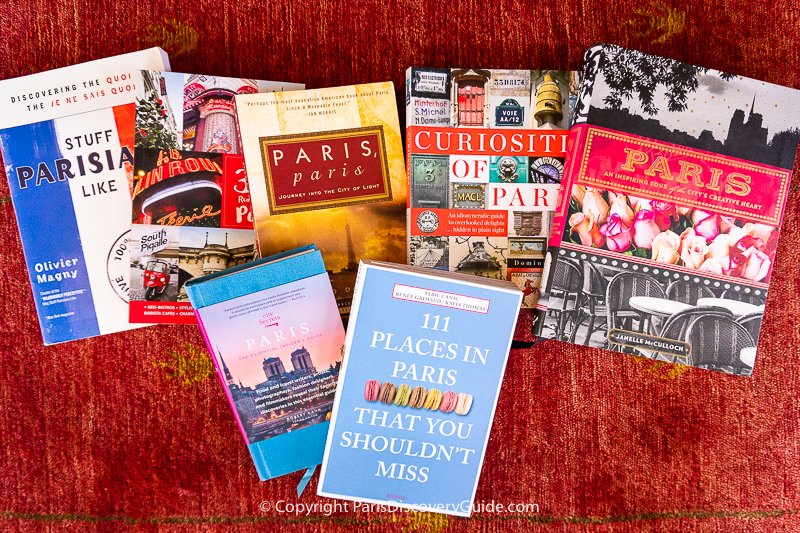
Stuff Parisians Like
To get a taste of contemporary Parisian culture and perspectives, you can't find a better introduction than this fun book of very short essays by Parisian Olivier Magny (who, incidentally, also owns the popular Ô Chateau wine bar/bistro in the 1st arrondissement).
Stuff Parisians Like covers everything - tongue in cheek, of course - from why Parisians like the sun to their love affair with "le burger." In between, you'll find out why Parisians like to go to the movies on Sundays, why young Parisians are more likely to spend their time hanging out with friends at house parties instead of bars, and lots, lots more. "Useful Tips" and "Sound like a Parisian" sections at the end of each chapter are priceless.
Even better: When you arrive in Paris, stop by Ô Chateau (68 Rue Jean-Jacques Rousseau) for a drink and perhaps some charcouterie, and if Olivier happens to be behind the bar that day, you can tell him how much you like his book. You can also sign up for one of their special wine-tasting experiences while you're there (or reserve a spot in advance before you travel).
Recommended for: Paris visitors who want light-hearted (but serious) tips at understanding Parisians and their unique social culture.
Want more from Olivier Magny? Get his latest book, WTF?! (which stands for What the French, vs what you may have thought), packed hilarious insights about modern France and its various idiosyncrasies.
Paris, paris: Journey into the City of Light
By David Downie
Each of the short essays in Paris, paris: Journey into the City of Lightfocus on places and people observed by writer and long-time Paris resident David Downie during his rambling walks around his adopted city.
A view of Rue Saint-Martin from Centre Pompidou's rooftop terrace starts his musings about how this road predates the Romans, which then leads more thoughts about historic sites along other ancient Paris roads (and a 3-month trek with his wife along Roman roads criss-crossing France, although that's another story). A glass of white wine on a spring night turns into an exploration of the boat people of the Seine. And so on. Each essay in Paris, paris transports you to places, people, and information you might not discover on your own - information that will enrich your own experience of this ever-fascinating city.
Recommended for: Anyone who loves to be transported beyond their own experiences - and of course anyone who wants a deeper understanding of the strands of history and people who make up Paris.
300 Reasons to Love Paris
By Judith Ritchie
Even if you plan to focus your first trip to Paris on visiting iconic attractions such as the Eiffel Tower and Louvre Museum, it's still fun to squeeze in a hour or two each day to explore a hidden garden, indulge in a superb but out-of-the-way pastry shop, shop along a quintessentially Parisian market street, stop by the latest trendy juice bar or wine bar, shop at the below-the-radar outlet stores for famous Paris designers, gaze at the best historic jewelry collections by world-famous jewelers, make your own custom perfume, dine at at hip rooftop bar, and have a drink in the city's coolest underground bars.
That's what 300 Reasons to Love Paris is about - an insider's list of secret or little-known places as overlooked pleasures at better-known attractions that most tourists never discover on their own, especially on a first visit. Need more inspiration? Numerous color photos and detailed location maps make finding these places easy!
Recommended for: First-time and return visitors who want to experience a bit of the "real" Paris.
Paris: An Inspiring Tour of the City's Creative Heart
By Janelle McCulloch
The beautifully designed Paris: An Inspiring Tour of the City's Creative Heart focuses on all things related to creativity in Paris - and yes, that covers a lot of ground.
Neighborhood strolls in a dozen arrondissements form the heart of Paris: An Inspiring Tour.
In the Montorgueil neighborhood which crosses the 2nd and 9th, that means a look at the popular bars and bistros, bakeries and pastry shops, produce and cheese sellers along the famous market street as well as detours into 19th century covered passages and the design showrooms such as Pierre Frey on Rue Montmartre/Rue du Mail.
In Bastille (11th) and Canal Martin (10th), you'll learn about trendy boutiques, artisan workshops lining the labyrinth of passages and courtyards, the Viaduc des arts arcade, and bars and nightspots you shouldn't miss.
And finally, toward the book's end, you'll find useful addresses: where to buy great lingerie, fabrics, Chanel's latest collection, ballet flats, and so forth - plus a curated list of tea rooms, bistros, bakeries, and gourmet food markets.
Recommended for: Anyone who wants to learn about and explore Paris's hubs of creativity - or even just find the best bakeries, jewelry makers, antique and vintage shops, tea salons, and ice cream. This is also a fabulous book for when you want to curl up in a comfy chair, look at lush photos, and dream about your future trip to Paris.
111 Places in Paris That You Shouldn't Miss
By Sybil Canac, René Grimaud, Katia Thomas
The three authors of the somewhat quirky, always fascinating 111 Places in Paris That You Shouldn't Miss have dug deep to come up with secret places and hidden treasures, and as a result, you'll learn about some very cool things here.
For example, a Japanese-inspired cat cafe for when you crave feline company with you café au lait. Or the oldest fountain in Paris, when you can find near Centre Pompidou (and stop by the wonderful Stravinsky Fountain while you're there. Or in the hills of Montmartre, a secret staircase in Passage de la Sorcière ("The Witch's Passage) which is close to the public but, as the book reveals, there are two ways you might get in.
One or two photographs accompany each place described in111 Places, plus the authors recommend other things to do and see nearby. One thing to be aware while a few of the cafes and bars have closed or moved on, other recommendations have evolved. For example, Place #48, Halle Pajol, is still a great suggestion and nearby Marché de la Chapelle is still a wonderful market, but there's now more to see and do in the neighborhood: the Rosa Luxembourg Garden and on the other side of the railroad tracks, the large modern Eole Garden (which is more like a park). Watch for an updated edition!
Recommended for: First time Paris visitors who want to visit a couple of "hidden treasures," and return visitors who want to see the "real" Paris, and everyone else who likes to seek out cool things.
Books about Paris Food & Markets
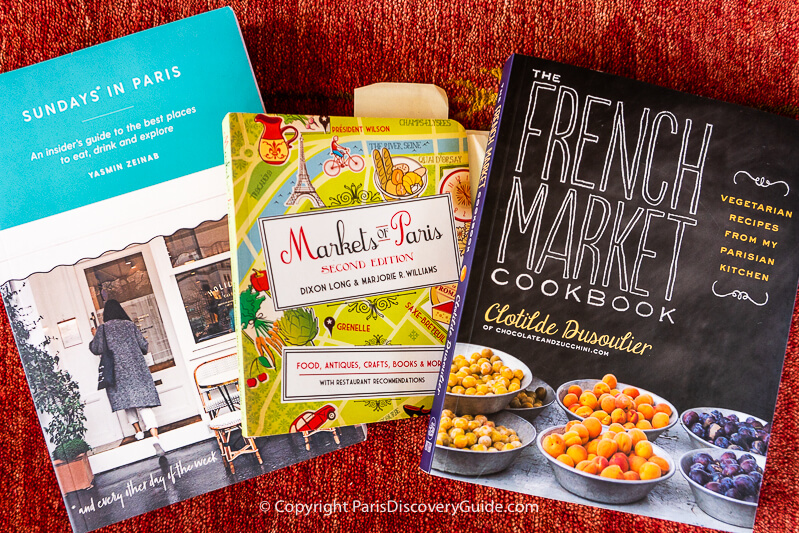
Sundays in Paris
By Yasmin Zeinab
Sundays in Paris grew out of a curated list of the best places to eat on Sundays started by the author years ago when she first arrived in Paris from Lyon and discovered that some places close on that day. Although she includes her recommendations for places to enjoy coffee, brunch, and dinner and drinks in almost all 20 Paris arrondissements (strangely, she omits the 15th, a mostly upscale residential district with tons of good places open on Sundays), she also devotes almost the second half of the book to cultural attractions, gardens, shopping areas, and markets for you to visit on Sundays.
Dip into Sundays in Paris at any point in the book, and you're sure to find a mouth-watering description of food or cultural experiences. Some are well-known, like Gregory Marchand's Frenchie bistro on Rue de Nil in the 2nd district, but others like the hidden terrace at Ralph's, the extension of the Ralph Lauren store on the Left Bank, may be a surprise.
Recommended for: Everyone who wishes for a Parisian friend willing to share her favorite addresses for food, culture, and shopping on a leisurely Sunday.
The Only Street in Paris: Life on the Rue des Martyrs
By Elaine Sciolino
Rue des Martyrs runs for about half a mile from Montmartre through the heart of SoPi, the trendy family-friendly neighborhood south of Pigalle in the 9th arrondissement. It's one of our favorite streets on the Right Bank for strolling, shopping, and eating, and while nothing beats doing this in person, reading this book before or after a Paris trip is a close second.
Lined with unassuming butchers, fruit shops, bakeries, wine sellers, cafes, and an assortment of other businesses, Rue des Martyrs harkens back to an older working-class Paris, even as cute clothing boutiques and modern bistros catering to newly arrived bobos ("bourgeois-bohemians") threaten to erode its authenticity.
In The Only Street in Paris, former New York Times Paris bureau chief and Rue des Martyrs resident Elaine Sciolino, brings the street to life with stories about the neighborhood's history, merchants and residents, and most all all its food. Read the book before you travel, and once you arrive, stroll down the rue and savor its pleasures for yourself.
Recommended for: Anyone who enjoys mesmerizing travel writing that brings a place and its people to life.
The French Market Cookbook: Vegetarian Recipes from My Parisian Kitchen
Written by Clotilde Dusoulier
You may already know Clotilde Dusoulier's fresh perspective of French cuisine from her popular Chocolate and Zucchini blog (chocolateandzucchine.com), where she writes about cooking and shares recipes for (mostly) simple dishes based on fresh ingredients straight from the markets of Paris.
In The French Market Cookbook, Dusoulier shares 90 new vegetarian and vegan recipes such as an asparagus buckwheat tart and peach, almond, and cardamom clafoutis. Best of all (unlike many recipes posted on the web by people who you suspect have never actually made the dishes because when you do, the results are, let's just say, not great), my personal experience as NOT the world's greatest cook is that these recipes are virtually foolproof and produce delicious results.
Why, you may be wondering, is a cookbook included in an article about Paris guide books? Simple - if you rent an apartment for your stay in Paris, you'll have the opportunity to shop in Paris' wonderful markets for fresh produce, cheese, and other ingredients and then use them to prepare meals in your apartment's kitchen. This cookbook and its mouth-watering photographs will give you lots of inspiration!
Recommended for: Anyone who loves to cook and wants to make contemporary French vegetarian cuisine - either in your own home kitchen or in your apartment in Paris.
Markets of Paris
By Dixon Long & Marjorie R. Williams
Planning to visit any of Paris's wonderful markets?
If so, Markets of Paris will be an essential resource for you as you decide which markets to visit. In 20 chapters, one for each of Paris's 20 arrondissements, the authors provide details about the district's open-air and covered food markets (the stars of this book), as well as other markets: flea markets, a bird market, book markets, antiques markets and dealers, the booksellers (les bouquinistes) along the Seine, arts and crafts markets, and even the historic covered passages and arcades.
Lush color photos will make you a) feel really hungry, and b) wish you were in Paris RIGHT NOW! As a bonus, the authors include a list of their favorite restaurants in each district, which will make you feel a) even hungrier, and b) even more impatient to be there.
Recommended for: Everyone who plans to shop in any of Paris's huge spectrum of traditional markets.
Join a Paris Food Tour
Some of these food tours typically involve trips to markets:
Guides to Paris History & Architecture
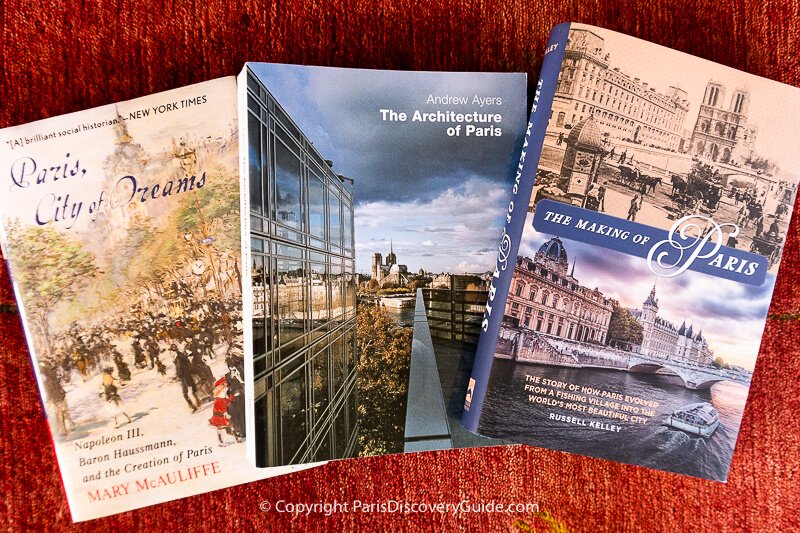
Paris, City of Dreams: Napoleon III, Baron Haussmann, and the Creation of Paris
By Mary McAuliffe
If you're interested in learning (while also being entertained) about how Paris made the transition from a dank, congested, and smelly medieval center to the beautiful metropolis with broad boulevards and excellent sewer and transportation systems of today, you may be too fascinated by Paris, City of Dreams to put it down once you start reading.
Paris, City of Dreams focuses on the years between 1848 and 1871 when Napoleon III and his right-hand person, Baron Haussmann, transformed the metropolis during the Second Empire. But although this book provides plenty of interesting details about their efforts and successes in remaking the city, the descriptions of the upheavals taking place in Paris society, art, theater, and even banking that will keep you riveted.
Why read this book? You'll not only get an appreciation for Napoleon III and Haussmann's profound contributions to the Paris of today, but you'll also get a much deeper understanding for the foundations of modern Parisian society.
The Architecture of Paris
By Andrew Ayers
Paris is unquestionably one of the world's most beautiful cities, packed with breathtaking medieval jewels, modern masterpieces, and everything in between. The overall effect is harmonious, but once you start looking at specific buildings, you'll become aware of the incredible variety and richness of detail. Every building has a story - and The Architecture of Paris is the book to turn to when you want to find out what it is.
In the 400+ pages of The Architecture of Paris, you'll find detailed descriptions of the history and architectural details of the most important and interesting buildings (and sometimes fountains and other structures) in each of the city's 20 arrondissements, nearby suburbs including Versailles and Fontainebleau. There are even short sections on 19th century covered arcades, Seine River bridges, and "street furniture" - lamps, trash bins, and other city street furnishings.
Occasional black and white photos break up the tightly packed text but the value of this book is the information conveyed by the written content. Fortunately, Ayers' writing is succinct but never dull or boring.
Who will get the most enjoyment from this book? You, if you want to know the history and architectural details behind Paris's most important buildings, either while you're there or before you visit.
The Making of Paris
By Russell Kelley
History and architecture share center stage in The Making of Paris, a fascinating look at how Paris has evolved during the past 2,000+ years from a tiny fishing village on the banks of the Seine River to the beautiful, exciting, and people-friendly city of today.
Numerous black and white drawings and vintage photos as well as timelines bring the book's factual content to life. The special strength of The Making of Paris, aside from Kelley's lively writing style, is focusing on places such Notre Dame, the Vendôme Column, and the city's famous open air markets and covered arcades that you'll see as you walk around the city today. Thanks to this book, you'll also know and appreciate their backstory.
Why you should read this book: It's a fun read while you're planning your visit to Paris, and you'll absorb lots of interesting details that will add to your appreciation and enjoyment when you see the city's famous monuments, buildings, bridges, and other features.
Paris Travel & Guide Books to Buy in Paris
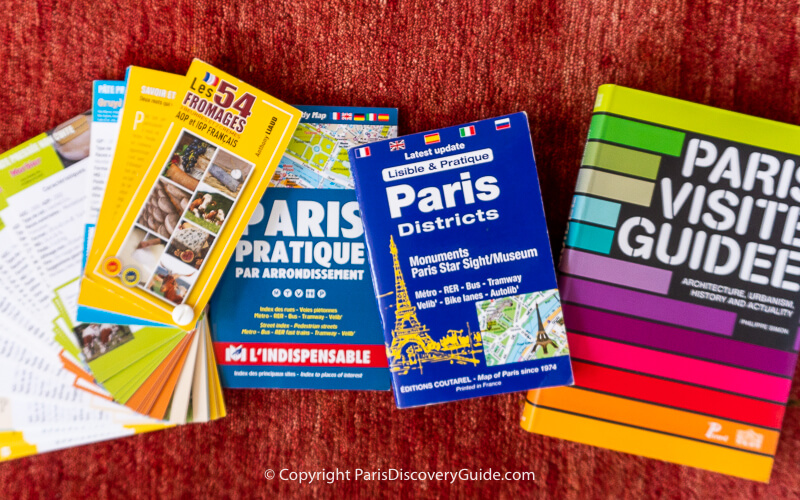
Why wait to buy these guides when you're in Paris instead of before you travel?
Simple - they are published in France and may not be available in your home country, at least not at a reasonable price.
The two books in the middle, Paris Pratique and Paris Districts (this is an English-language version; the French version is called Paris Arrondissements), contain detailed maps of each arrondissement, an index which lists every street, park, and other places and tells you the page and coordinates where you can find it in the book, and metro, train, RER, and bus maps. They are invaluable for when you need better views than you can get on your phone - and also for when you don't want to use up your data supply or can't get a connection.
Of the two, Paris Districts is thinner, smaller, and lighter weight, so it is the best one to carry with you. It costs about 10€, which is a bargain considering how useful it is. Almost every news kiosk in the city used to carry them before mobile phones and cheap data became so ubiquitous. Now they're harder to find - but worth the search. The one in the photo above came from the news kiosk on Champs-Elysees.
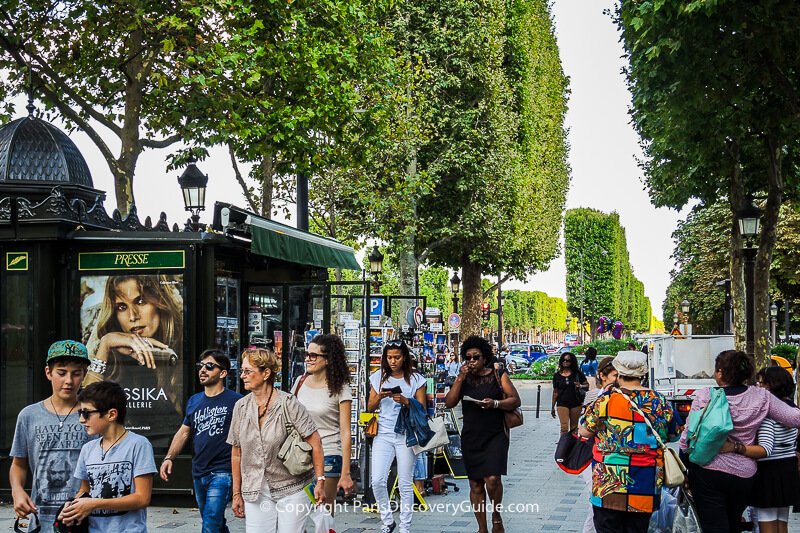
If you can't find the Paris Districts arrondissements map book, Paris Pratique is an excellent second choice, although slightly larger and 2-3 euros pricier.
You can find it (or other similar arrondissement map books) in most bookstores and also in many Paris Fnacs. - try the one at 74 Champs Elysees. (Fnac is a popular French chain known for its electronics, books, toys, and household appliances.)
Some cheese shops (fromageries) sell Les 54 Fromages, which will tell you everything you need and want to know about the most important French cheeses. It's a fun souvenir, plus a great gift.
Look for Paris Visite Guidée in Pavillon de l'Arsenal (21 Boulevard Morland, 4th arr). It's a wonderful book that details the history of Paris from an urban planning and architectural perspective, starting with the "enclosed" city of 1190, continuing through Baron Haussmann's modernization of Paris in the 1850s, and ending with the continued renovations, re-imaginings, and planned developments of today. Despite the title, the book is in English.
Pavillon de l'Arsenal, by the way, combines a center for urban planning and architecture, a related museum, and a fabulous bookstore (free admission to all). Most books are in French, but you'll find a small but interesting selection of titles in English, German, Spanish, and Italian. It's close to the Seine (and the Sully-Morland metro station) and always well worth a visit.
Fun Ways to Tour Paris
More Articles about Planning Your Trip to Paris
Need a Paris Hotel or Apartment?
Planning to visit Paris soon? Use this Paris hotel and apartment booking map to find accommodations and make your reservations:
Booking.com

